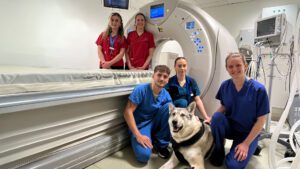Objective
To determine the prevalence of hemorrhagic gastro-intestinal (GI) disease developing in dogs and cats admitted for management of non-GI disease in veterinary intensive care units (ICUs).
Study design
Retrospective study of animals presented between October 2012 and July 2013.
Animals
Dogs (n = 272) and cats (n = 94) were consecutively enrolled from 3 ICUs if they were hospitalized in the unit for at least 24 hours. Cases were excluded if they had hemorrhagic GI disease in the 48-hour period before presentation or in the 24-hour period
Methods
Hemorrhagic GI disease was observed in dogs at all 3 units, but at different rates (Center 1: 10.3%, Center 2: 4.8%, Center 3: 2.2%). Hemorrhagic GI disease was not observed in cats at any of the participating centres. Construction of a multivariable logistic regression model revealed that serum albumin concentration, administration of prophylactic gastro-protectant drugs, and institution were significantly associated with the development of hemorrhagic GI disease in dogs. Development of hemorrhagic GI disease and placement of a feeding tube were significantly associated with mortality during the period of hospitalisation in dogs. Thirty-seven (13.6%) dogs and 12 (12.8%) cats died or were euthanised while hospitalised, with a higher mortality rate (42.1%) in dogs with hemorrhagic GI disease.
Results
Hemorrhagic GI disease does develop in dogs hospitalised for management of non-GI disease, but this phenomenon was not observed in cats. Development of hemorrhagic GI disease appeared to have a significant impact on survival in veterinary ICUs.












